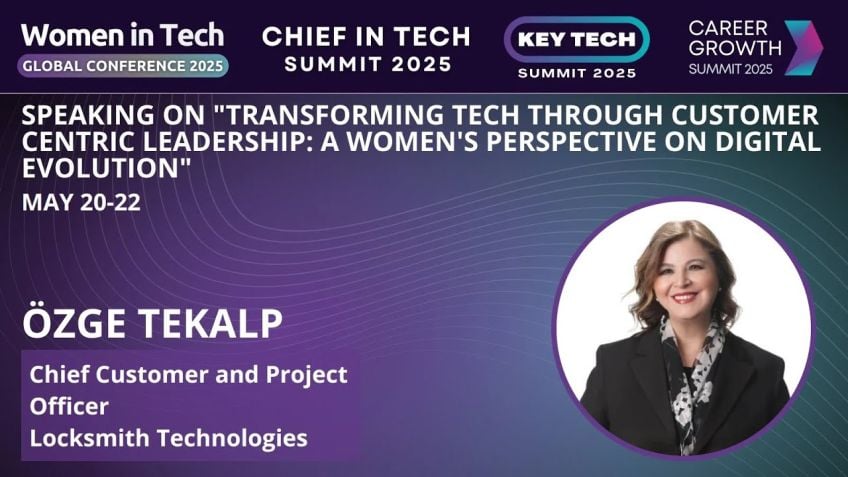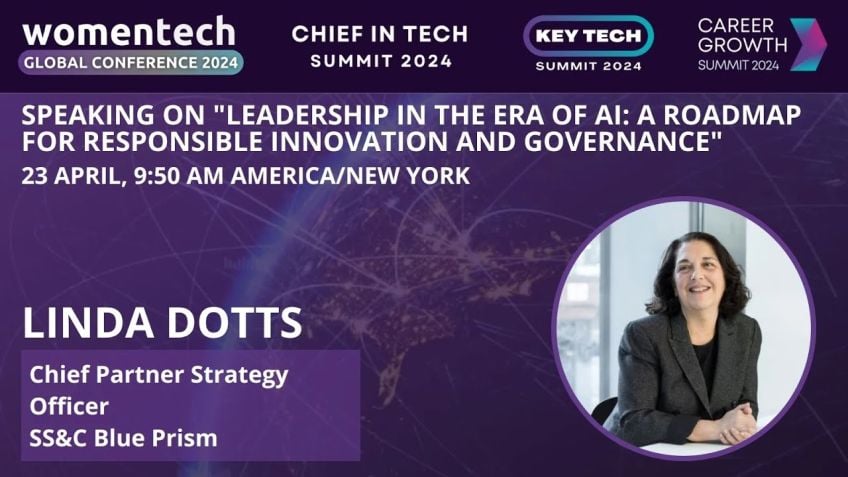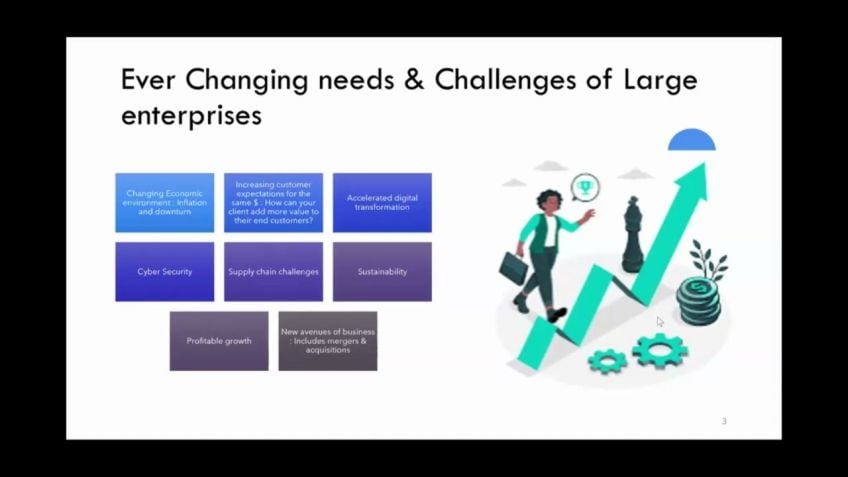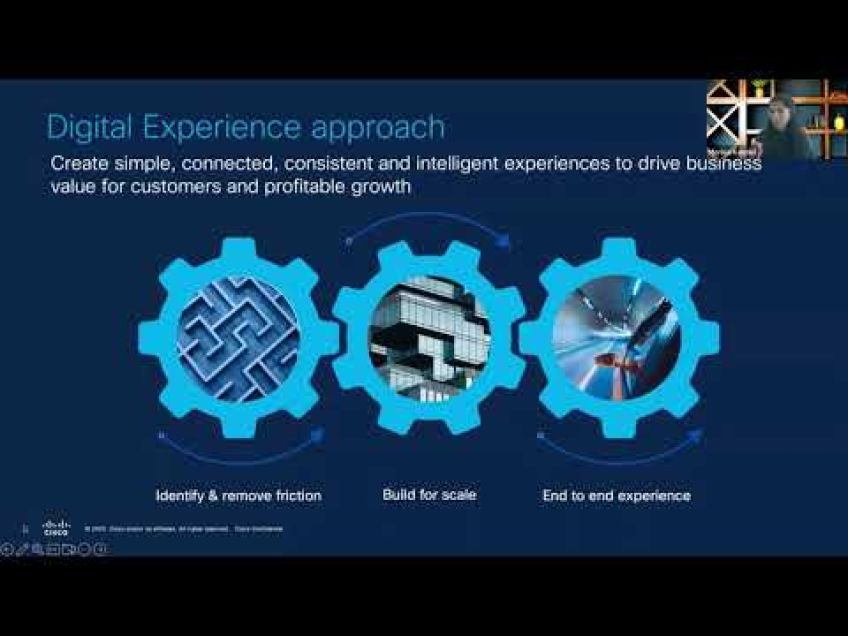Customer Experience: navigating disruptive forces with one clear focus by Nikki Lindgren
Reviews
Navigating Disruptive Forces and Enhancing Customer Experience
Hello and thank you for joining me. My name is Nikki Lindgren, the Director of Customer Experience at Positive Intelligence, currently presenting from Vienna, Austria. Today, I will explore how businesses can navigate disruptive forces with a clear focus on customer experience.
Management and Digital Transformation
As part of this presentation, we will explore not just the conceptual aspects of customer experience but its applications in real-world business scenarios. Why is it important to learn customer behaviour and performance? How can products provide cohesive experiences from discovery to purchase, disposal, and renewal? By the end, we will delve into a new vision of cooperative learning experiences that define the future of work.
The Power of Empathy and Resilience
Let me share a part of my childhood story that shaped who I am. This story is proof that adversity can be transformed into strengths such as empathy and resilience that are fundamental in the business setting. Human beings are at the centre of customer experience and I encourage you to exercise empathy and resilience whenever you can.
The Essence of Customer Experience
Customer experience revolves around the human experience. It involves creating value consistently as requirements evolve. It's about curating and evaluating important questions and focusing on customer behavior, learning, and performance metrics such as net promoter score, customer effort score, turnover rates, daily or monthly average use. By designing models of customer journeys with their points of truth, lights, and links, you can improve the right customer touchpoints.
Product Experience and Organizational Structure
Did you know that the product is not just about a tangible item but a cohesive experience from discovery to usage, maintenance, renewal, and even disposal? This paradigm shift faucets into understanding your role in the products and services you offer. Another important aspect is understanding the company’s organizational structure. Projects, when introduced and positioned for dual purpose, can enable agility by evolving a team's way of working.
The Future of Work
Kickstarting the future of work would involve supporting people, processes, and technology behind various customer touchpoints for delivery of intelligent experiences. This is achieved when projects are leveraged as learning tools within team structures that lead to robust customer and employee experiences.
Encouraging Resilience
Disruption is an essential part of the human experience. During this period of changing realities, it is important to remain resilient, pursue learning, and make positive choices. Look back into your life's major events and begin to accept or convert them into opportunities, and this too can be a powerful tool when dealing with conflict.
In closing, I want to express my gratitude to Anna Rawski and the women and tech organizers for this opportunity. I also thank you, the reader, for your time and I hope you found valuable insights from this blog post just as much as I derived pleasure from sharing my experiences.
Video Transcription
Thank you for coming. My name is Nikki Lindgren and I'm the Director of Customer Experience at Positive Intelligence and I'm presenting from Vienna Austria. I'll be speaking about how business can navigate disruptive for forces with one clear focus and that is customer experience.
My track and topic today is management and digital transformation. As a part of the chief of summit kickoff. By the end of this presentation, you'll have a holistic perspective of customer experience, yet be able to apply its value in specific scenarios of work. You'll learn why a customer behavior learning and performance is important. You'll also see why products are cohesive experiences from first discovery to purchase to disposal and renewal. Finally, I ask you to imagine a new future of co-operative learning experiences, the future of work.
So I'm gonna let you in on a little secret and I admit all of this is true. I originally structured today's presentation on the more t technical aspects of what I do and why of curiosity and inversion and how it can enable a U A unifying vision during time punctuated by uncertainty, volatility, complexity and ambiguity. I'll still drive home the seven key takeaways.
But the structure has fundamentally changed. Ironically enough, it was the least part, least stressful part of the whole experience. And why? Because the presentation today is about the human experience, the part that I made time for everything, that part that I made time for everything flowed from this.
So I begin with a story. I'll tell you mine. This is a photo of me taken when I was four. The f the first four years of my life were less than ideal. I was born during a flood, a ruined home, a new family, a new city, but a family that was also in ruin. My father didn't know me and my mother didn't know how to protect me. I had stress induced seizures where I couldn't deal. So I, I stopped breathing and breath remains something that keeps me to this day very centered in elementary school. I wore a patch over an eye to correct a condition that I had. And this left me deeply empathetic to those who might feel and look different in my childhood. I imagined a place where I was first lady, the president of my world. My perspective was a value and people listened to me. I see myself sitting at a table, others around me. And I, as I was distinctly not alone and being myself caring and everyone being heard, funnily mattered. In this role. I felt I was part of a well functioning system of talented head collaborators. This new world order I imagined was a safe, full, safer, more peaceful and kinder place. Nikki means victory for the people. And I've met, I have always believed that names are important that they have a, a profound meeting.
And I realize now looking back that that's closely tied to my why and life as these experiences gave me the ability to overcome my adopted father was a hero and a stabilizer. He was from the date he met me. My father and my fondest memory is sitting high above his head on his shoulders in curiosity asking questions about just about everything. Waiting for his patient answer his calm voices showing that he had time. It's funny. He, he used to call me Rock of Gibraltar, but he was really mine. Of course, you don't see any of that here. But it all happened around the time this photo was taken. I had a lot of stories since. But as I said, it's only in looking back that you can connect the dots. And I realized that these three experiences were deeply formative. A childhood photo gave me deeper empathy for myself. And it gave me back real strength and served as a reminder and a reconnection to my purpose in life. I realize now that my later years focused on learning and accomplishment as a means of escape. And I realized that this desire to help others was my way of avoiding this past as someone driven to achieve. I needed an exercise of empathy, particularly empathy toward myself. And I hope this exercise doesn't make you feel pity.
I'm not asking for that, but I do want to show you how important that being human is and to invite you to show up as yourself in business, finding opportunities where we can exercise empathy and resilience. These are some of the most powerful things to learn in this experience that we call life. It's about making choices and evolving our ways of working. And it's about choosing to accept or convert life experiences and life challenges. So what does this mean in, in the context of customer experience? And why do I see these things as being so fundamentally important? Because customer experience is about the human experience, it's about creating value over and over again as the requirements evolve. And that's what I love most about my role in customer experience. It's the reason why I believe that it can be with a one focus to enable organizations and disruptive times from the individual to the team to a team contributor to the CEO in a time of big data change, information and distractions. Customer experience is about getting really curious.
It's about re evaluating the big questions that get you focused on value and values with questions such as what are we tracking right now and why? It's also about collecting data on customer behavior learning and performance. But it's also a lot more than that. It's also about employee behavior learning and performance. I'll explain this later. We put together all sorts of fascinating metrics that make customer experience so real and measurable, like net promoter score or customer effort score turn rates daily or monthly average use.
I get this innovative and exploring sense when I start looking at the data, feeling like you might as as a child that picks up a rock that's embedded in the earth, seeing all of the action living underneath and then carefully placing the stone back in place again while knowing something is still going on.
Also, customer experience is about designing a mockup model of the actual customer journey and all of its points of truth lights and links and knowing that certain certain touch points have a different value attribution, some are more important than others and trying to figure out how to improve the right ones.
Customer experience is about using customer data insights for team data driven decision making. The aim is to create the right preconditions for both the customer experience. And I would argue it the employee experience. Most of all customer experience is about making intentional choices when it's done in the context of a collaborative high task team. It's the most powerful TNT that exists to man. We know that customer experience is an internal and a subjective response. It's not about providing massive amounts or features to everyone as a preference of fewer features and options may actually be what's really needed. You can never create a universal experience for everyone. So there are a lot of tough and risky questions in customer experience like who is our primary customer? Which then leads to how do you create an experience that positively resonates with the largest number of target customers, which then leads to resource allocation. You must practice empathy, resilience and patience with customers as well as the team in leadership. But mostly most importantly yourself in customer experience projects are learning and change management tools to help you test and evolve your concept and team. Now, what about the products we use and the products that we produce? I'd like for you to think about this a bit in your life and work.
Paraphrasing from the father of UX design, Don Norman, a product in reality is about a cohesive experience from discovery to purchase to anticipation for the very first use. It's also about learning and continued use as well as service updates, maintenance, extra supplies and then e eventually renewal and disposal or exchange. You see products are also experienced. Now, isn't that interesting? How might this shift your viewpoint about what you do and what you consume and your role in the products and services that you offer? Product is the overlap. Products can be a source of common truth, a center of, of exchange of information and value. But for us as humans, it's as it's always been fundamentally it's about the connected learning experience, customer and employee pragmatically. What does this mean? Well, a traditional R chart is a representation of a company structure. Its purpose is to illustrate the reporting relationships and the chains of command within the organization. Employees, names and titles and or job positions are generally depicted in the box in, in boxes or in circles with lines, linking them to other employees and other departments looking at the company or chart.
People can gain a quick understanding of how the organization is designed it number of levels and where each employee fits into the organization. Let's say you offer products and or services on your given platform. And there are various owners throughout the discovery, try apply and manage experience.
The problem is these various owners are siloed into their phases of the user journey and they're not always communicating with what the user experience is throughout an end to end experience. When the organi when the current organizational structure is not geared to this effort, then individual efforts are inconsistent and dependent on their own bandwidth marketing wants to hit their number, sales, wants to hit their numbers, it wants no issues. And at some point, all of these goals may be in conflict versus a team approach where cross functional team members work together towards the same goal, fragmented ownership means fragmented journeys. And this is where projects come in. Projects are innovative tools of change and tools for learning their instruments of development for teams. And a secondary goal in my mind should always be acknowledged as an aim to improve team behavior learning and performance. I believe they are one of the most underutilized assets in a company's arsenal. With the traditional organizational charts, decision making and information flows more or less vertically, top down and bottom up projects typically flow in the opposite direction like the typical customer experience or horizontally.
When properly introduced and positioned for this dual purpose projects actually enable agility by evolving a team's way of working. So the business units can function in a more enterprise aware manner. When employees feel safety and support in a team environment, they're able to better manage uncertainty and take cues from each other more easily pivoting to change. An organization is a mean of leveraging our our species superpower cooper operation. But in times of dis of extreme disruption, the ability and the willingness to cooper can fall by the wayside. This is where using customer experience as a single source of truth in alignment with products and projects comes in. So I'd like to end with an excerpt from a Harvard business review article written in March 2022 by Edelman and Abra which concludes customer experience is about supporting the people processes and technology behind the many customer touch points so that the front and flow to the customer and the back end solution can drive intelligent experiences.
Those intelligent experiences are projects when used with a dual purpose as learning tools within a smaller team structure. My prediction is that with coc created learning experiences, we will revolutionize the future of work as we know it through a data technology and human abled enabled customer and employee experience. I've always thought children's swings were the most beautiful of things. That's why I chose this photo, the fun of it, the playground context, the happy and receptive nature of a child swinging the dental sway of that movement. This repetitious back and forth up and down but not for forget to reflect on our childhood selves, our true selves. We've had a particularly rough last few years. Disruption plays an integral part in the human experience when what we believe about our world and perhaps ourselves too shifts. What was once deemed mission critical is simply blown to the wayside and we are forced into a new reality of focusing on what is really important now be empathetic, look to convert your difficult situation into a gift or opportunity or simply accept it and move on during times of disruption, learn and be resilient and decidedly choose to see the positive in your experiences.
The customer experience itself is in the simplest form of facilitating a human learning journey. In the context of business. It can provide perspectives when properly introduced and positioned for this dual purpose projects can actually enable agility by evolving a team's way of working.
I've attached three slides one on methodology, one with big questions to ask and a few points of reflection. I'll flip through them quickly after I'm finished and you'll have access to that as well. After the event, I hope that you enjoyed our journey together and that my learning behavior and performance has been valuable to you. But you recognize the power of the tools I mentioned in your life to help you navigate disruption, acting as a guide, as you evolve your way of working as an individual, as a contributor and as a leader. So with the time remaining 4 to 5 minutes, I want to gift you back a few minutes of your time. Find that childhood photo perhaps in your mind's eye for now, but go ahead and find it later post it someplace where you will see it and reconnect to that true childhood self and the potential which still resides in you. You'll find more energy as you exercise self care. Look back at certain life events and begin to accept or convert them into gifts. You can also practice this when dealing in conflict with others. It's a very powerful tool. Thank you, Anna Rawski and the women and tech organizers for this opportunity.
Thanks also Klos Sabina Joey and Sandy Last. Thank you for listening. I hope you've enjoyed our session here today and I trust that you'll enjoy the rest of the conference. Thank you very much.






No comments so far – be the first to share your thoughts!